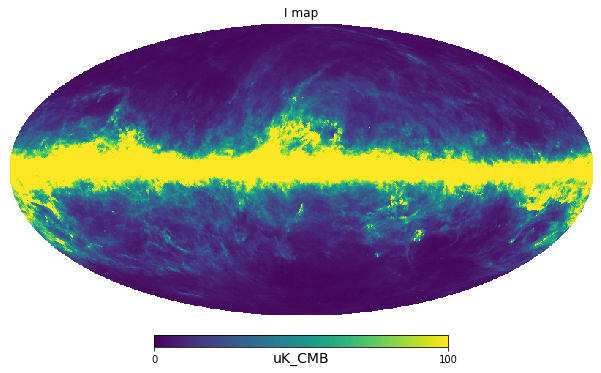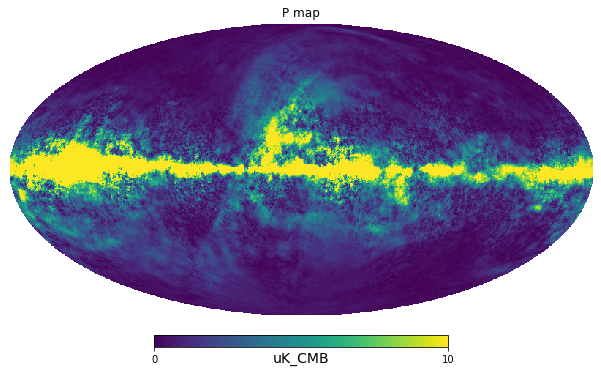Getting started¶
The main interface to PySM is the pysm3.Sky class, the simplest way is to specify the required resolution as \(N_{side}\) HEALPix parameter and the requested models as a list of strings, for example the simplest models for galactic dust and synchrotron ["d1", "s1"]
[1]:
import pysm3
import pysm3.units as u
import healpy as hp
import numpy as np
[2]:
import warnings
warnings.filterwarnings("ignore")
[3]:
sky = pysm3.Sky(nside=128, preset_strings=["d1", "s1"])
PySM initializes the requested component objects (generally load the input templates maps with astropy.utils.data and cache them locally in ~/.astropy) and stores them in the components attribute (a list):
[4]:
sky.components
[4]:
[<pysm3.models.dust.ModifiedBlackBody at 0x7f5f0706d050>,
<pysm3.models.power_law.PowerLaw at 0x7f5f5463d250>]
PySM 3 uses astropy.units: http://docs.astropy.org/en/stable/units/ each input needs to have a unit attached to it, the unit just needs to be compatible, e.g. you can use either u.GHz or u.MHz.
[5]:
map_100GHz = sky.get_emission(100 * u.GHz)
The output of the get_emission method is a 2D numpy array in the usual healpy convention, [I,Q,U], the polarization convention used, as customary for CMB datasets, is COSMO instead of IAU: https://lambda.gsfc.nasa.gov/product/about/pol_convention.html. The unit by default is \(\mu K_{RJ}\):
[6]:
map_100GHz[0, :3]
[6]:
Optionally convert to another unit using astropy.units
[7]:
map_100GHz = map_100GHz.to(u.uK_CMB, equivalencies=u.cmb_equivalencies(100*u.GHz))
[8]:
import matplotlib.pyplot as plt
%matplotlib inline
[9]:
hp.mollview(map_100GHz[0], min=0, max=1e2, title="I map", unit=map_100GHz.unit)

[10]:
hp.mollview(np.sqrt(map_100GHz[1]**2 + map_100GHz[2]**2), title="P map", min=0, max=1e1, unit=map_100GHz.unit)

[ ]: